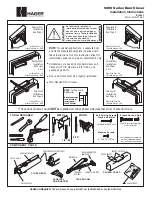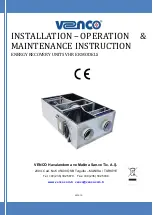
13
14
2.4 Welding position
Flat position is the easiest of the welding positions and is most commonly used. It is
best if you can weld in the flat position if at all possible as good results are easier to
achieve.
The horizontal position is performed very much the same as the flat weld except that
the angle is different such that the electrode, and therefore the arc force, is directed
more toward the metal above the weld joint. This more direct angle helps prevent the
weld puddle from running downward while still allowing slow enough travel speed to
achieve good penetration. A good starting point for your electrode angle is about 30
degrees DOWN from being perpendicular to the work piece.
2.5 Judge a good weld bead
When the trick of establishing and holding an arc has been learned, the next step is
learning how to run a good bead. The first attempts in practice will probably fall short
of acceptable weld beads. Too long of an arc will be held or the travel speed will vary
from slow to fast (see following)
It is important that the gap be maintained during the welding process and it should
be neither too wide or too narrow. If too narrow, the rod will stick to the work piece.
If too wide, the arc will be extinguished. It needs much practice to maintain the gap.
Beginners may usually get sticking or arc extinguishing. When the rod sticks to the
work piece, gently rock it back and forth to make them separate. If not, the circuit is
short connection, and it will overload the welder. A good arc is accompanied by a crisp,
cracking sound. The sound is similar to that made by eggs frying. To lay a weld bead,
only 2 movements are required; downward and in the direction the weld is to be laid,
as in following figure:
2.3 Types of weld bead
The following paragraphs discuss the most commonly used arc welding beads.
The stringer bead Formed by traveling with the electrode in a straight line while keeping
it centered over the weld joint.
The weave bead Used when you want to deposit metal over a wider space than would
be possible with a stringer bead. It is made by weaving from side to side while moving
with the electrode. It is best to hesitate momentarily at each side before weaving back
the other way to improve penetration.
Summary of Contents for CARiARC 140DB
Page 1: ......





























